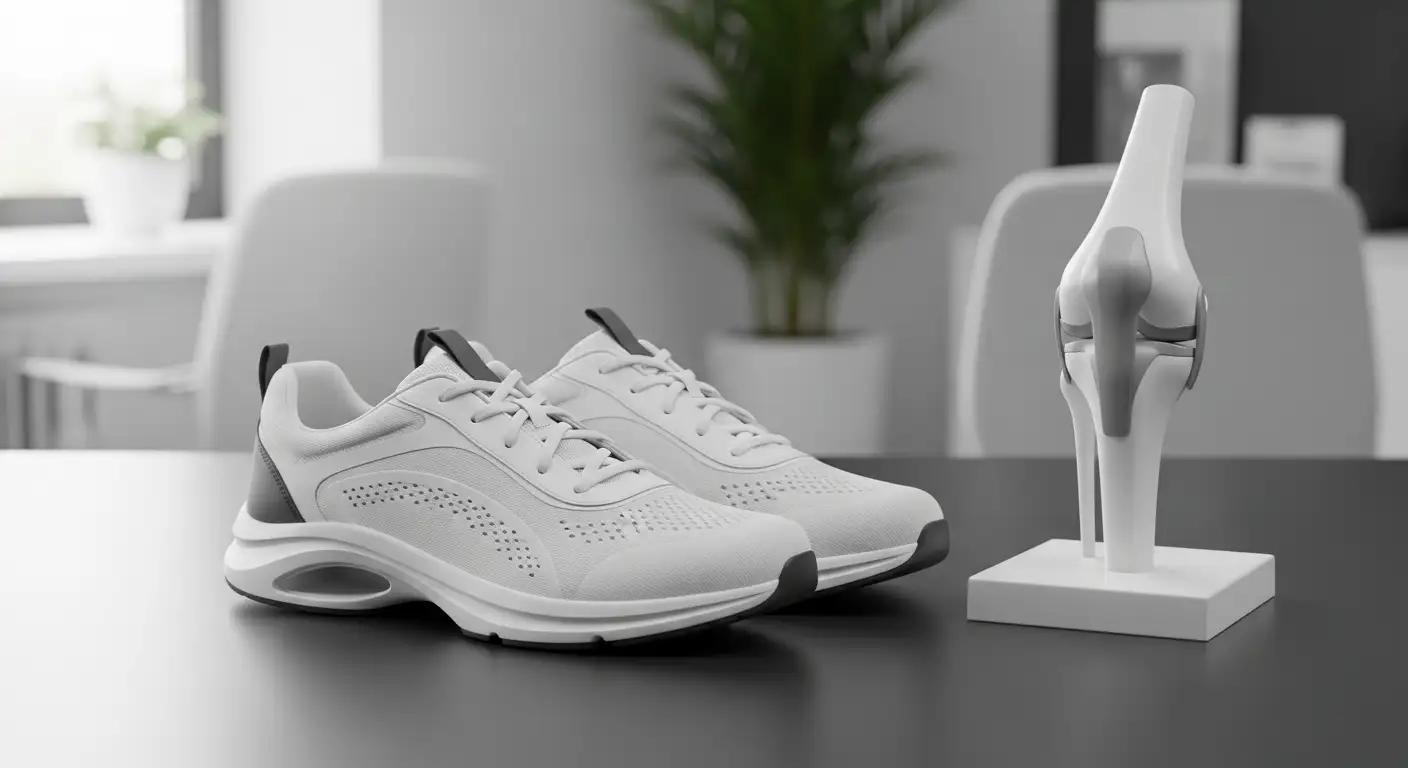Understanding Knee Pain
Knee pain is a common ailment that affects people of all ages. It can result from a variety of causes, ranging from sudden injuries to chronic conditions. Understanding the cause of knee pain is the first step in finding effective treatment.
Causes of Knee Pain
Knee pain is typically caused by traumatic injuries, repetitive motion injuries, long-term wear and tear, or tissue disorders [1]. Activities such as running, jumping, or exercises that repeatedly stress the knee can lead to overuse injuries, sometimes referred to as "runner's knee".

Injuries such as strains, sprains, ligament tears, cartilage tears, or broken bones can also cause knee pain. These injuries can result from activities like landing wrong on your foot, falling, twisting the knee, or impact injuries like being hit on the knee. Swelling around the injury is a primary cause of pain.
Furthermore, conditions like patellar tendinitis, caused by inflammation in the tendon connecting the kneecap to the shinbone, can result from overdoing exercise. Repetitive jumping, such as in basketball, is a common cause of this condition [2].
Common Knee Injuries
There are several common injuries that can cause knee pain. These include:
- ACL injuries: The anterior cruciate ligament (ACL) can be sprained or torn if the knee is suddenly twisted or receives a direct hit. This is a common injury among athletes who play sports such as soccer, basketball, and football.
- Fractures: The bones in or around the knee can break during motor vehicle accidents or falls. People with osteoporosis can also sustain knee fractures more easily.
- Meniscus tears: The meniscus can be torn during activities that cause direct contact or pressure from a forced twist or rotation. A meniscus tear is a common injury among athletes.
Each of these injuries can cause severe knee pain and require immediate medical attention. It is crucial to understand these common injuries as part of the broader context of the knee injury knee pain location chart.
Identifying Knee Pain Locations
Understanding the location of knee pain can help identify potential underlying causes or conditions. It's important to note that knee pain can be caused by a myriad of factors, from simple overuse to more complex issues like degenerative diseases.
Knee Pain Location Chart
A knee injury knee pain location chart can be a valuable tool when trying to understand the possible causes of knee pain. By pinpointing the exact location of the pain, you can narrow down potential conditions or injuries.
For instance, pain at the top or bottom of the knee might be caused by different conditions than pain on the inner or outer sides of the knee. Once you have identified the location of your pain, you can then explore potential treatments and preventative measures.
Top and Bottom of Knee Pain
Pain at the top of the knee, often referred to as 'anterior knee pain', can be caused by conditions like patellar tendinitis or quadriceps tendinitis. On the other hand, pain at the bottom of the knee, or 'posterior knee pain', can be caused by conditions such as baker's cyst or hamstring tendinitis [4].
Inner and Outer Knee Pain
Inner knee pain, or 'medial knee pain', is commonly the result of cartilage deterioration due to injuries. Outer knee pain, or 'lateral knee pain', shares many common causes with inner knee pain, including ligament sprains and meniscus tears [4].
It's crucial to remember that while a knee injury knee pain location chart can be a helpful tool for understanding potential sources of pain, it should not replace a consultation with a medical professional. Individuals experiencing severe pain, fever, or long-term knee pain should seek medical attention as these could be symptoms of an underlying health issue [4].
Factors Affecting Knee Pain
When it comes to understanding knee pain, it's crucial to be aware of the factors contributing to it. The causes are usually multifaceted, and standard reasons can include traumatic injuries, overuse and wear & tear, and tissue disorders. A deeper understanding of these causes can help determine appropriate treatment plans.
Traumatic Injuries
Traumatic injuries are a significant cause of knee pain, often resulting from activities that cause a sudden impact to the knee. These can include ligament damage, bone fractures, or severe arthritis. Common injuries leading to knee pain include ACL (Anterior Cruciate Ligament) injuries, fractures, or tears of the meniscus (cartilage).
Injuries can also occur from strains, sprains, ligament tears, cartilage tears, or broken bones. Such injuries are often due to landing wrong on your foot, falling, twisting the knee, or impact injuries like being hit on the knee. Swelling around the injury is a primary cause of pain.
Overuse and Wear & Tear
Overuse injuries are another common cause of knee pain. These injuries often result from activities that repeatedly stress the knee, such as running, jumping, or exercises. This type of injury is sometimes referred to as "runner's knee" [2].
Physical activities, exercise, playing sports, and doing physical work can also result in knee pain. Overuse issues include jumping a lot or working on hands and knees, which can stress the knee joint [3].
Over time, regular wear and tear can also contribute to knee pain. As individuals age, tissues become less pliable, brittle, weaker, and more prone to injury. Daily activities and injuries contribute to wear and tear, but persistent knee pain could signify an underlying health issue.
Tissue Disorders
Knee pain can also be caused by a muscular imbalance, with one muscle group being stronger or overworked than another [5]. Factors such as weak muscles, balance issues, and tight muscles can contribute to knee injuries. Strengthening the quadriceps and hamstrings, performing flexibility exercises, and balance training can help prevent knee pain and injuries.
Understanding these factors can help individuals make informed decisions about their knee health. From identifying the cause of their knee pain using a knee injury knee pain location chart, to seeking appropriate medical help, this knowledge can empower individuals to manage their knee health effectively.
Seeking Medical Evaluation
If knee pain persists or becomes severe, it's crucial to seek medical evaluation. This section will detail signs that indicate the need for medical attention, and the importance of accurate diagnosis in treating knee pain effectively.
Signs for Medical Attention
There are several signs associated with knee pain that should prompt a visit to a healthcare professional. According to the Stone Clinic, one should seek medical evaluation if knee pain is experienced when walking, bending, resting, or accompanied by popping or clicking sounds. These sounds can be indicators of specific issues requiring further examination.
In addition to this, sudden or sharp knee pain without recent strenuous activity, difficulty bearing weight on the leg, lack of improvement with conservative methods, or knee buckling are all reasons to seek medical help.
Furthermore, severe symptoms such as major swelling, significant pain, fever, or long-term knee pain should not be ignored, as they could be symptoms of underlying health issues. In such cases, and especially in emergency situations, one should seek immediate medical attention.
Importance of Diagnosis
Accurate diagnosis plays a critical role in the effective treatment of knee pain. By understanding the precise location and cause of the pain, healthcare professionals can develop a tailored treatment plan to address the specific condition or injury.
The 'knee injury knee pain location chart' is a valuable tool that helps in pinpointing the area of pain, and can aid in the initial diagnosis. However, further diagnostic tests such as X-rays, MRIs, or CT scans may be required to confirm the diagnosis and fully understand the extent of the injury or condition.
Remember, self-diagnosis can be risky, and it's always best to consult a healthcare professional when experiencing persistent or severe knee pain. They can provide a comprehensive evaluation and ensure you receive the most appropriate and effective treatment.
Treating Knee Pain
Once you've identified the cause and location of your knee pain using the knee injury knee pain location chart, you can then explore various treatment options. These range from home remedies and the RICE method, to medical treatments, therapies, and preventive measures such as exercises.
Home Remedies and RICE Method
The RICE method (Rest, Ice, Compression, Elevation) is a recommended strategy for treating knee pain at home. This involves resting the knee, applying an ice pack to reduce swelling, using compression to alleviate pain, and elevating the knee to reduce inflammation. Depending on the severity and cause of the pain, healthcare providers may suggest medications, knee braces, or even surgery for knee pain treatment.(Cleveland Clinic)
Medical Treatments and Therapies
In more severe cases, or when home remedies do not provide relief, professional medical treatments and therapies may be necessary. This could include prescription medications, corticosteroid injections, physical therapy, or in some cases, surgery. Research suggests that physical therapy may be more beneficial in reducing knee pain than home exercises, emphasizing the importance of seeking professional advice for treating knee pain. (Healthline)
Preventive Measures and Exercises
Preventive measures play a crucial role in managing knee pain and preventing future knee injuries. Regular stretching and strength training, maintaining a healthy diet, and staying hydrated can help keep the knees healthy, prevent inflammation, muscle pain, and soreness. (Hospital for Special Surgery)
Specific stretches and exercises, such as the side leg raise, single-leg lift, hamstring stretch, and quadriceps stretch, can help prevent and treat knee pain by strengthening areas such as the core and gluteal muscles. These exercises can improve flexibility in the knee joint and reduce the risk of future injuries. However, it is recommended to consult a doctor or physical therapist before starting an exercise program. (Healthline)
By combining home remedies, professional treatments, and preventive exercises, you can effectively manage knee pain and promote overall knee health. It's important to always consult with a healthcare professional to ensure safe and effective treatment.
References
[1]: https://www.stoneclinic.com/knee-self-diagnosis
[2]: https://www.webmd.com/pain-management/knee-pain/knee-pain-causes
[3]: https://my.clevelandclinic.org/health/symptoms/21207-knee-pain
[4]: https://www.healthline.com/health/knee-pain-location-chart
[5]: https://www.mayoclinic.org/diseases-conditions/knee-pain/symptoms-causes/syc-20350849
[6]: https://www.hss.edu/article_stretches-exercises-knee-pain.asp





